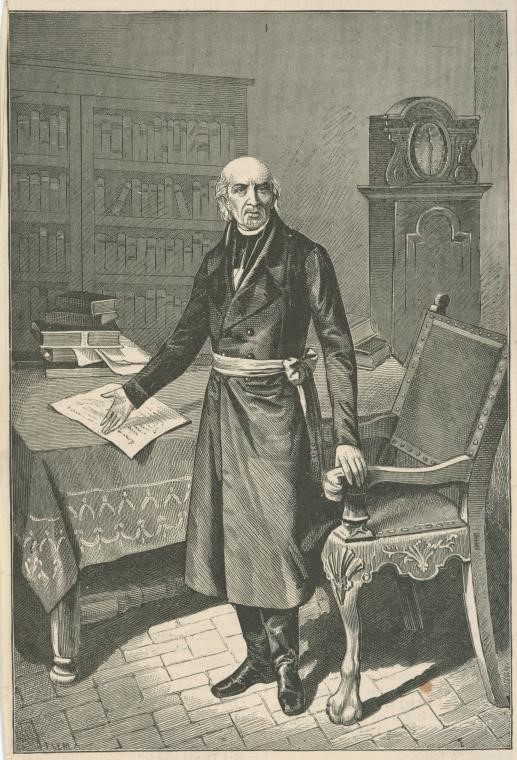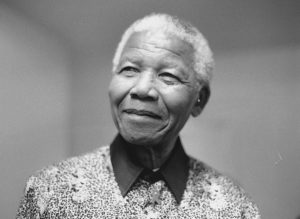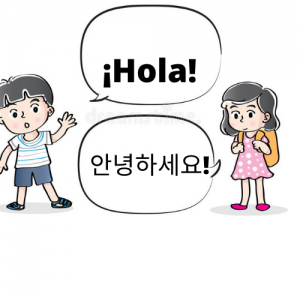Every 16th of September, there is a great celebration that occurs in Mexico. It is the celebration of independence, also known as “El Grito de Dolores” or “Cry of Dolores.” At twelve in the morning, yells of thousands can be heard throughout Mexico, expressing their love for the country and made in memory of the yell made by Miguel Hidalgo y Costilla to alert the church that the fight for Mexican independence had begun. Although well known, some people may not know of the work and sacrifice that went into gaining Mexico’s independence from Spain. Most notably, this revolution was due to an individual named Miguel Hidalgo. He was a Mexican priest, and history has recorded his meaningful involvement in Mexico’s fight for independence.1
During the time when the French Emperor Napoleon invaded Spain, the desire for independence and freedom was peaked in Mexico. But long before that, around the year 1773, there was a man by the name of Miguel Hidalgo y Costilla who obtained his bachelor’s degree from San Nicolás College and who became ordained a priest in 1778.2 As time past by, Hidalgo noticed how the Spanish would oppress the Mexican people, ultimately leading him to take a role that would impact Mexico’s future forever. Due to his charisma and outstanding personality, he was able to influence the Mexican lower classes to rise.

Miguel Hidalgo’s major involvement in the Mexican revolution was to motivate the lower class to rise up against the Spanish rule. Along with the help of Ignacio Allende and other revolutionaries, Hidalgo planned to revolt. However, early in September 1810, the revolutionary plan was exposed to the Spanish, along with who the revolutionaries were. Hidalgo had to think quick in order to find a way to inform the people that the revolution needed to begin earlier than when they had planned.3 They rang the church bells, and Hidalgo then gathered Mexicans together to hear him speak. He spoke about the consequences of being subjects of Spain, and to give a final push, he made the image of The Virgin of Guadalupe his banner for revolution. Most Mexicans were from the Catholic faith, so they viewed this revolution as a religious responsibility.
As time passed by, Hidalgo fought a number of battles against the Spanish, some with better outcomes than others. When the Spanish forces were reinforced, he headed north, which ultimately led to the Battle at Calderón Bridge.4 The battle ended terribly. The Spanish captured Hidalgo and his companions. He and the rest were taken to Chihuahua, Mexico, where they were put on trial. Miguel Hidalgo was found guilty, then shot and decapitated on July 30, 1811. Though Miguel Hidalgo was not around to see it, his death motivated Mexican troops to continue his cause of revolution. His actions had been necessary in order for the people of Mexico to come together and fight to gain its independence by 1821.


Today, the impact of Miguel Hidalgo is remembered every year with ” El Grito de Dolores,” often also referred to as ” El Grito de Independencia,” which translates to ” the cry of Dolores” and ” the cry of independence,” which is in remembrance of the day when Miguel rang the bells of his church and proclaimed the Mexican fight for independence. There is no doubt that Miguel Hidalgo will go down in history not just because he gave up his life fighting for revolution, but because he had the courage to fight when no one else did. He was able to gather a Mexican army to fight back and little did he know that his actions would be a pivot point in order to achieve Mexican independence. There are multiple statues of him throughout Mexico, but the most notable one is in San Miguel de Allende, Mexico. People walk past the statue every day and remember the great sacrifice that was made in order to have the Mexico that is established today.
- Christon I. Archer, Miguel Hidalgo y Costilla (1753–1811) (Detroit: Charles Scribner’s Sons, 2008), 687-689. ↵
- E. Del Hoyo, Miguel Hidalgo y Costilla (Detroit: La Vida del héroe, 2003), 820-821. ↵
- Marvin Alisky, Miguel Hidalgo Y Costilla (Scarecrow Press, 2007), 259-260. ↵
- Wil G. Pansters, Mexico (New York, Macmillan Reference USA, 2001,), 1447-1464. ↵



32 comments
Fatima Navarro
This article brought back memories of elementary school, when back in Mexico we were given history classes and talked about this Cura who fought for our freedom in the name of La Virgen de Guadalupe. Even if he was captured and murdered, he left everything set and started for the rest of the Mexican people to follow and end it. There is so much meaning and pride the 16 de Septiembre every year remembering both Miguel Hidalgo and la Virgen de Guadalupe.
Joshua Garza
Its amazing to see that with the right type of charisma, one man can lead an entire country to fight for what is needed and to break free from a controlling power that is more established than themselves. Being from south Texas this story has been told to me many times by friends, family members or just other elders which fascinates me and inspires me every time I hear it because these are those stories that defy the odds.
Samire Adam
This article was able to give me knowledge on why Hidalgo is still remembered even through everything he did for the insist on violence. But I think this event in history really shaped Mexico and how it is seen today. He knew what he wanted and even as a priest he was not afraid of showing his love for his nation.
Motivation for something this strong just goes to show that you don’t necessarily need the best weapons, just the right amount of motivation and aspiration.
Dylan Coons
Love the article. It was brief but informative. I never knew much about Mexican Independence, (Being a white American male automatically decreases my initiative to learn about the subject on my own.) but that only made my experience reading this article all the better. Hearing that a priest of all people would call for the fight of independence is pretty unusual.
Natalie Thamm
This was a really great article about a topic that I had not known about previously. It is very apparent the work that Miguel Hidalgo y Costilla put into his cause and the impact that he had even after his death. His story showcases how one man can start change that ripples throughout a country and the implications that it can have for a community.
Irene Astran
I know Hidalgo was not the first to use religious icons in their political movement, but I appreciate the flag that incorporated the Virgen de Guadalupe. This banner you have pictured in your article must have struck a chord for those viewing it in that time. The message it carries is that this man is of the faith and on a divine mission to liberate the Mexican people.
Ximena Mondragon
When I was going to school in Mexico I learned about Miguel Hidalgo since he was one of the key leaders in the whole revolution. In Mexico he is still remembered and honored as one of the saviors of Mexico against Spanish. This article is very informative as to why he is still very important and it gives the background to the “El Grito.”
Jasmine Rocha
There are many names that come to mind when it comes to Mexico’s Independence but one person that this article focused on was Miguel Hidalgo, the article was very informative on the effect Padre Hidalgo had on Mexican independence. Padre Hidalgo inspired the revolution against the Spanish but unfortunately was not able to live and see the independence but his attempts gave the Mexican people the inspiration to keep going.
Montserrat Moreno Ramirez
Miguel Hidalgo is an icon for the Mexican culture. It’s true that he inspired this revolution and he was seen as a blessing at the time. But further studies have brought to the surface some theories where he just wanted that independence so the Spanish people would be banned and they (mestizos) could now rule. It’s very amazing how in spite of the odds Mexican people still won this battle, they fought with all they gad, rocks, sticks some guns and knifes. It’s crazy how when something or someone motivates them, they are capable o doing anything.
Sebastian Carnero
Great article. I wouldn’t have imagined one priest would be so involved in fights, although I admire his resolve and love for his nation. It is really crazy how he could change Mexico’s future. It is in part sad that he couldn’t see his nation free after all he did. Nonetheless, people have immortalized him in books and monuments such as the statue.